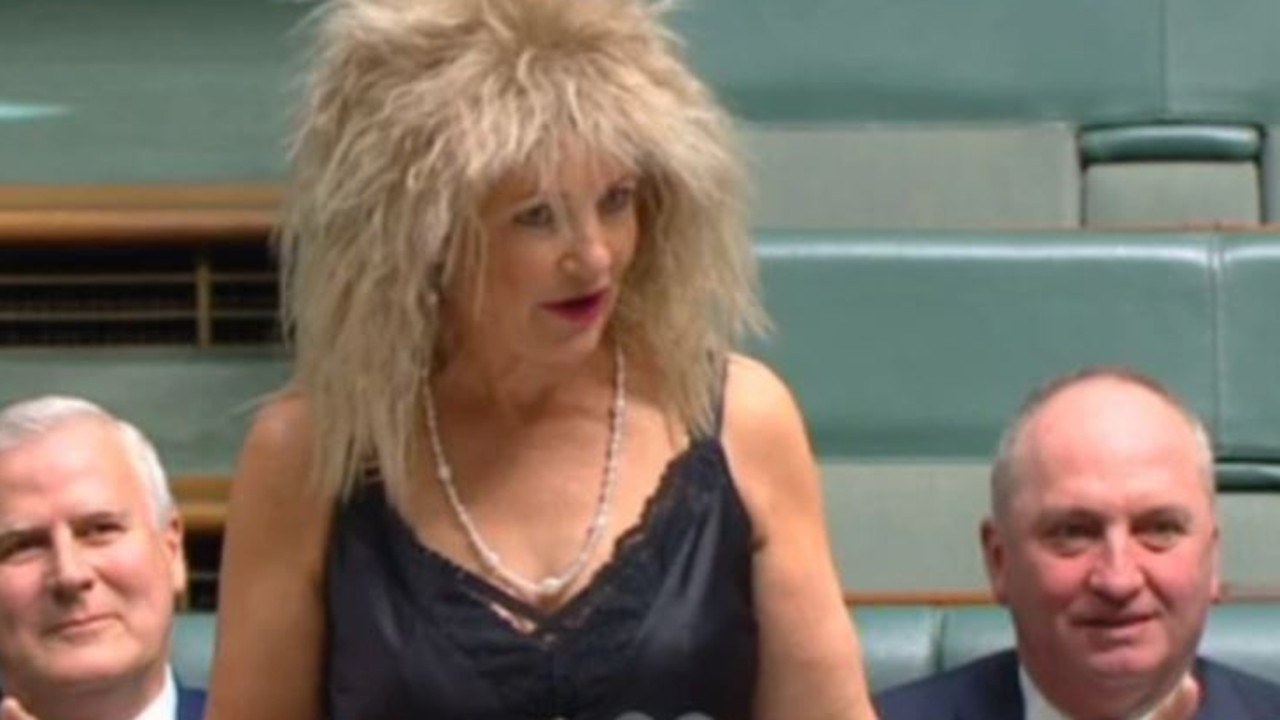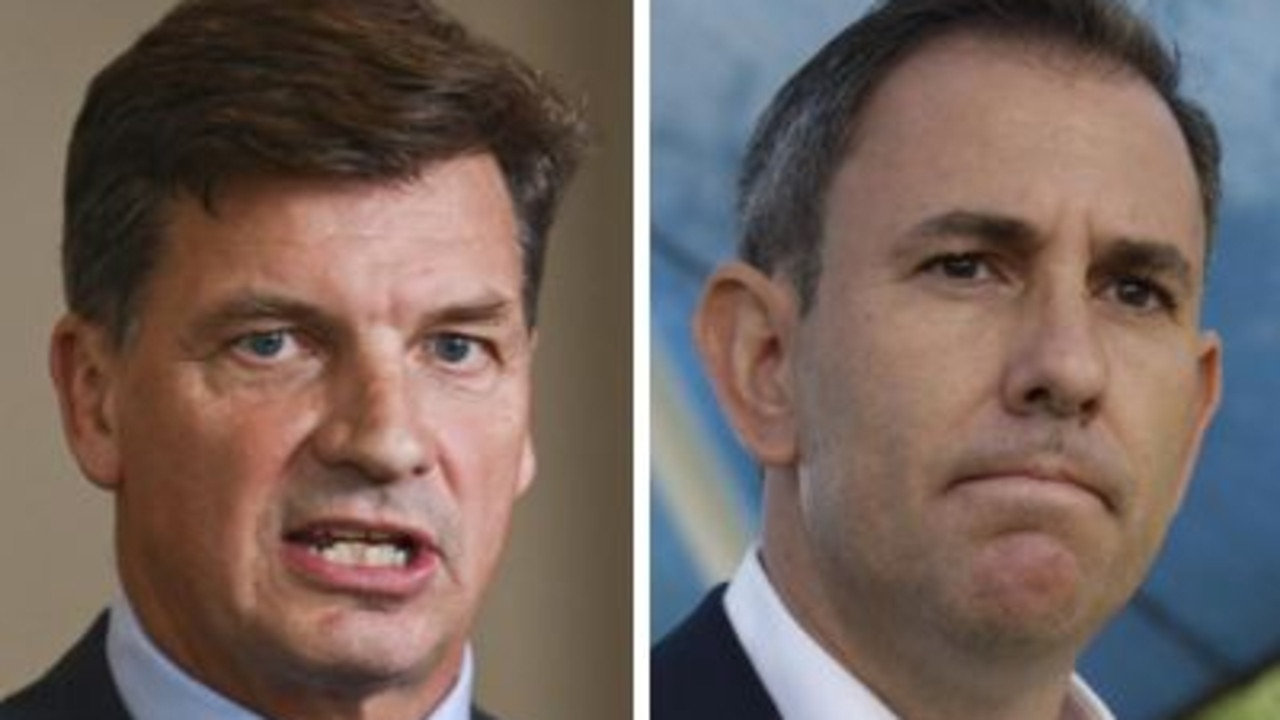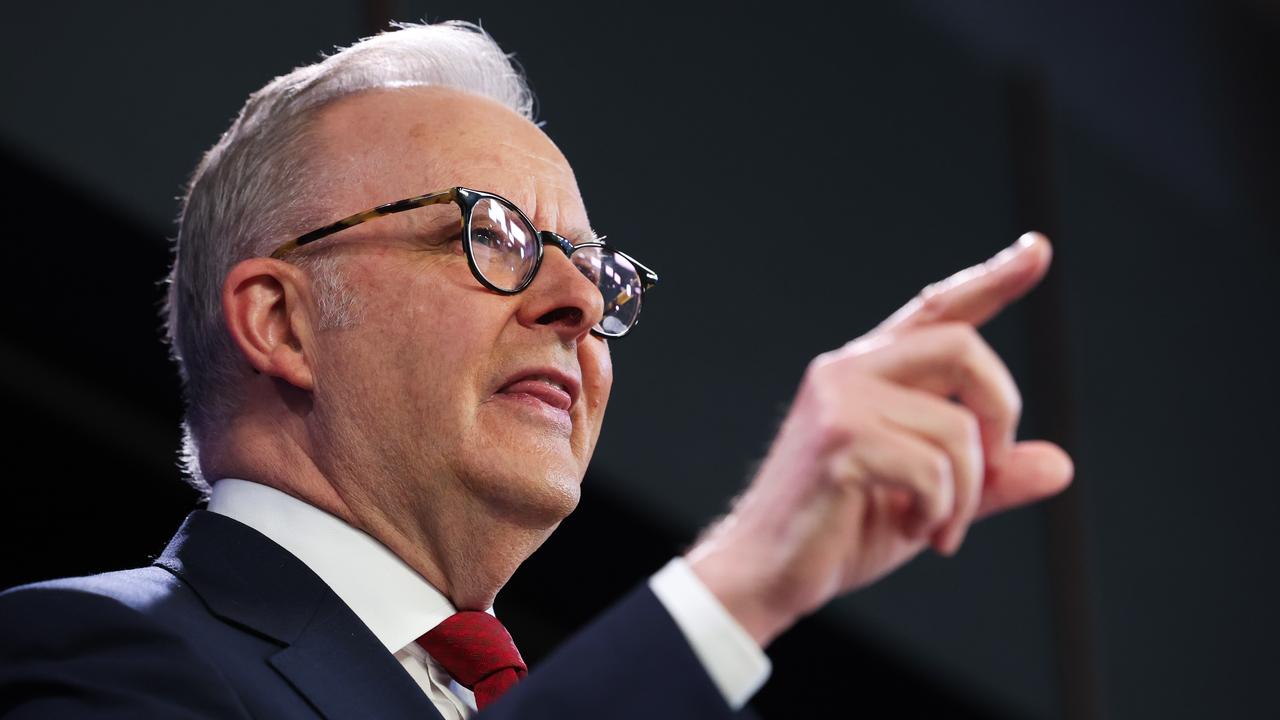What the 2016 Federal Budget means for you
EVERYONE from the young and struggling to the much older and more comfortable have been impacted by the Budget.
EVERYONE from the young and struggling to the much older and much more comfortable have been impacted by the 2016 Federal Budget.
This is what it means for you.
If you’re struggling to find your first job...
A new youth employment program called Young Jobs PaTH — which stands for Prepare, Trial, Hire — aims to help 120,000 vulnerable young people boost their job readiness and enter the workforce.
Starting in April next year, job seekers under the age of 25 will be able to register for “intensive pre-employment skills training” focusing on skills including working in a team, presentation and computer literacy.
The government will then work with businesses to introduce an internship program where the job seeker will work 15 to 25 hours a week for between one and three months.
During the internship the government will top up the job seeker’s regular income support payment with an extra $200 per fortnight. “This is real work for the dole,” Scott Morrison said.
If you earn about $80,000 a year...
Half a million workers earning over $80,000 have been given a tax cut.
The government is increasing the upper limit for the second highest tax bracket of 37 cents in the dollar from $80,000 to $87,000.
A worker earning over $87,000 will now be up to $315 better off every year.
Previously, they would have been taxed at 37 per cent on every dollar earned over $80,000, whereas now the lower tax rate of 32.5 per cent will apply.
Bracket creep, where the process of inflation pushes people into higher income brackets without an increase in their spending power, has been described as taxation by stealth.
Scott Morrison said the government would “like to do more, but this is what we can afford today”.
The changes will cost the budget $3.95 billion over the next four years.
Try the Budget calculator below
If you’re a low-income earner...
You haven’t been forgotten.
The government will forgo $280 million in revenue over the next four years by raising the thresholds at which low-income earners have to start paying the Medicare levy.
For singles, the threshold will be increased to $21,335. For couples with no children, it will be increased to $36,001, and for senior and pensioner couples with no children the threshold will go up to $46,966.
For couples, the additional amount of threshold for each dependent child or student will increase to $3306.
The government will also keep a tax offset that means low income earners will get up to $500 of the tax they pay on their super refunded if they earn less than $37,000.
If you’re a small business owner...
Small businesses are getting another tax cut — and getting bigger at the same time.
Last year the government reduced the tax rate from 30 per cent to 28.5 per cent for businesses with turnover of less than $2 million.
This year, Scott Morrison has cut the tax rate further to 27.5 per cent, while at the same time increasing the scope to businesses with turnover of less than $10 million.
That means 870,000 businesses employing 3.4 million Australians will have their tax rate reduced.
Around 60,000 businesses employing 1.5 million fall into the $2 million to $10 million bracket. They will have their tax rate reduced by 2.5 per cent after missing out last year.
And remember that instant tax deduction for business equipment under $20,000 introduced last year?
The government has also extended that to businesses under $10 million turnover — but it still expires on 30 June 2017, so get splashing that cash.
If you’re a big business owner...
But wait, there’s more. Big business will get access to the lower tax rate as well — eventually.
The government will do this using an incremental process, firstly by gradually increasing the size of businesses that can access the lower tax rate of 27.5 per cent, and finally by reducing the tax rate for all business to 25 per cent.
The threshold will increase from $10 million to $25 million in 2017-18, to $50 million in 2018-19, and $100 million in 2019-20.
That will mean that by 2020, around 4.9 million people — more than half of all employees in the country — will be working at companies paying the lower tax rate of 27.5 per cent.
The threshold will increase every year until 2023-24, before a final tax cut for all businesses to 25 per cent in 2026-27.
If you’re looking to buy a home…
This Budget doesn’t make it any easier. Confirming negative gearing would not be removed or limited, and capital gains tax would not be changed, Mr Morrison made out he was doing average taxpayers a favour.
“Those earning less than $80,000 a year in taxable income make up two thirds of those who use negative gearing,” he said in his speech.
“We do not consider that taxing these Australians more on their investments, including increasing their capital gains tax, and undermining the value of their own home and investment is a plan for jobs and growth.”
If you own property…
Mr Morrison doesn’t want to be unfair to property owners and “undermine the value of their own home and investment”.
So he’s not making any changes to negative gearing and capital gains tax discounts. Though the tax concessions are pushing house prices higher which is bad news for property seekers, the Government doesn’t think that’s reason enough to “increase the tax burden on Australians who are just trying to invest”.
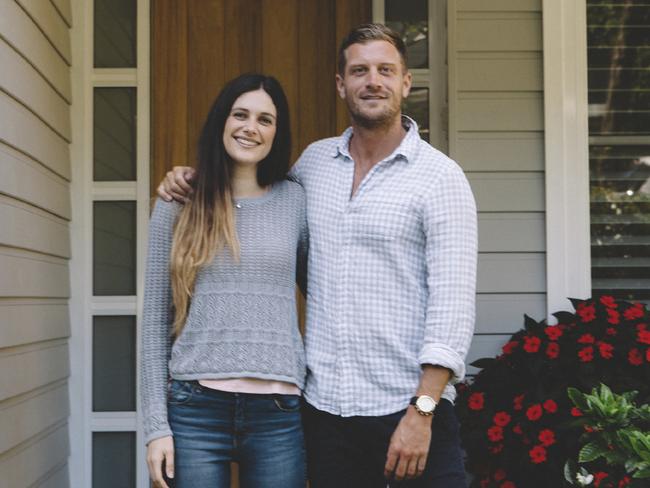
If you are an older Australian...
The government will get rid of the requirement that someone aged 65 to 74 years old has to be working to put money into super. It will also allow someone to put money into their spouse’s account regardless of whether he/she is working.
If you are a woman...
The government will help you to build up your super savings if you take time off work to have children.
You will get up to $500 tax refunded if you earn less than $37,000, and will be able to rollover super balances for five years if you put less than $25,000 a year into super.
If you are a low-income earner, your partner will also get tax offsets if they put money into your super.
If your kids are in school…
It’s not as much as the Opposition is promising, but the Government has allocated $1.2 billion in additional funding for government and non-government schools.
The grants will be tied to performance measures decides by the Federal Government, meaning schools will only get the extra cash if they live up to their standards. The conditions attached to the extra funding have been sold as ensuring “better outcomes for students and parents”.
If you have a really large super fund...
The government will stop people from building up multi-million dollar super funds in an effort to save $550 million. From now on, the total amount of extra money people can voluntarily put into their super funds (not including money they salary-sacrifice) will be capped at $500,000.
The transition-to-retirement rules will also change so people who are under the age of 65 can only access $1.6 million tax free before they retire. This cap will apply to everyone, including current retirees.
The government will also stop people from holding more than $1.6 million in tax-free super accounts. People will either need to withdraw the money from their accounts or transfer it into a separate accumulation account, where the earnings will be taxed at 15 per cent.
To put this into perspective, the average super balance for a 60-year-old Aussie is $285,000.
If you’re a smoker…
Bad news. The Government is planning a further four annual 12.5 per cent increases in tobacco excise.
Starting September 1 next year, the price of cigarettes will go up every single year for at least the next four, edging closer to the $40 pack smokers all fear.
Also from July 1 next year, smokers will only be allowed to leave the airport with 25 cigarettes or equivalent, rather than the current 50.
If you have bad teeth…
The Government will establish a $1.7 billion Child and Adult Public Dental Scheme to ensure that dental spending is prioritised to those most in need.
All children and adult concession card holders only will be eligible for the scheme, which will see the Federal Government provide 40 per cent of the what it decided is the “national efficient price” of dental work, with states and territories chipping in the extra 60 per cent under national partnership agreement.
To fund the scheme, they’re shifting around money from existing dental programs, but say those are under-utilised or inefficient.
If you’ve been burned by the big banks...
The corporate watchdog is getting a funding boost to help combat bad behaviour in the financial sector, with Australia’s banks to pay for the privilege of their own regulation.
ASIC will get an extra $121.3 million over the three years from 2016-17 to increase surveillance and enforcement in the financial advice, responsible lending and life insurance sectors. Treasury will get an extra $5.9 million over the same period.
The cost will initially be offset by an increase in fees collected by the Australian Prudential Regulation Authority, with the user-pays industry funding model to commence in the second half of 2017.
However, the Abbott Government actually cut $120 million from ASIC’s funding in 2014, with staff numbers down 14.4 per cent since 2014-14 from 1834 to 1569.
The funding for ASIC includes $39.2 million for technology upgrades, presumably leaving the leftover $82.1 million for increased staffing.
If you need to go to hospital…
The Budget’s major contribution to hospitals is making sure they run better.
An estimated additional $2.9 billion for public hospitals over the next three years is focusing on improving patient safety and the quality of services and reducing avoidable hospitalisations.
If you’re worried about cancer, the Government will provide $178.3 million over five years to develop a National Cancer Screening Register.
Overall, the government’s health spend for 2016-17 will be $71.4 billion.
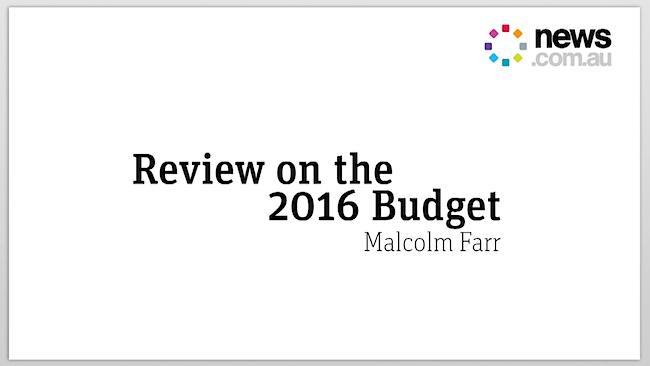
If you’re a uni student...
The government has basically put higher education in the too-hard basket.
The document tells us they haven’t planned what they’re going to do with universities yet, but whatever is, institutions are facing big cuts with the Government expecting its undefined plans to save them $2 billion.
Students have already planned their protests around funding cuts and fee deregulation expected to be included in the Budget.
Instead, they’ve decided to delay making those decisions for another year to “undertake further consultation” on the unpopular deregulation package proposed in the 2014-15 Budget.
If you’re worried about being attacked…
The Government is laying down a “20-year defence industry plan”, promising big improvements to the nation’s defence capability and advancing technologies.
They’re planning to spend $29.9 billion on keeping Australia secure, bringing total spend in the area to $195 billion in 10 years.
A naval shipbuilding plan will equip Australia with 12 new submarines, nine future frigates, and 12 offshore patrol vessels, and secure more than 3,600 jobs for Australians in the process.
The Budget also provides $686 million for continued military operations to help protect Australia.
If you’re worried about terrorism…
The government will provide $5 million towards countering violent extremism.
That’s $4 million for the Attorney-General’s Department to work with states and territories provide community support and advice services. Another $1 million will go to the Office of the Children’s eSafety Commissioner to tackle online radicalisation through educational resources.
The Government will also provide $153.6 million to boost security to Australian Federal Police (AFP) and the Australian Crime Commission (ACC) in light fo the terror threat against those agencies.
If you’re worried about being hacked…
Cyber security is vital to our economic and national security.
This Budget provides $195 million to deliver a comprehensive cyber security strategy for Australia, which builds on the $38 million announced in the National Innovation and Science Agenda.
The Government has put $195 million towards cyber safety.
Around $47 million will go towards establishing scary-sounding Joint Cyber Threat Centres, while $21.5 million will go to expanding our Computer Emergency Response Team (CERT).
Another $51 million will go towards investing in public-private partnerships and better protecting Commonwealth systems.
The Australian Federal Police get $36.4 million over four years, and the Australian Crime Commission gets an extra $16 million to fight cybercrime.
If you live in Adelaide or Perth…
You may be able to land a job in the future submarine project. The submarines will boost our defence capability, but it’s really about jobs and stimulating the economy, particularly in struggling South Australia.
Ship yards in Adelaide and Perth will be the base for the project where around 3,600 jobs are expected to be secured. But Mr Morrison is also promising “thousands more jobs” through the supply chain.
If you care about the environment...
The Clean Energy Finance Corporation (CEFC) and the Australian Renewable Energy Agency (ARENA) are safe but they will refocus their activities “towards the government’s innovation agenda”.
The CEFC will be responsible for allocating $1 billion in existing funding over 10 years to establish a Clean Energy Innovation Fund. The fund will provide money to assist emerging clean energy technology become commercially viable. The fund will be jointly managed by ARENA, which will also continue to manage its existing portfolio through the new fund.
The government will also provide $101 million over six years from 2016-17 to support implementation of the Reef 2050 Plan and $70 million over three years from 2019-20 to the Reef Trust.
If you think multinationals don’t pay enough tax...
Big companies that avoid paying tax in Australia by shifting profits offshore are facing even tougher rules, to be backed up by an extra 1000 specialist staff at the Australian Taxation Office.
The new measures include a diverted profits tax, which imposes a penalty tax rate of 40 per cent on income multinationals attempt to shift offshore — higher than the company tax rate.
There will also be more protections for tax whistleblowers and increased penalties for multinationals that don’t meet their obligations.
The government is optimistically pencilling in an additional $3.9 billion in revenue over the next four years from these measures.
If you’re a Commonwealth public servant...
Public servants are facing even more job losses as the government cuts $1.4 billion over the three years to 2019-20.
The government is backing away from a pledge last year to reduce the so-called efficiency dividend — an annual reduction in the resources available to a government department.
The efficiency dividend will instead be maintained at 2.5 per cent for an extra year before reducing to one per cent by 2019-20.
The cuts will partly help pay for bracket creep relief for workers earning over $80,000.
Community and Public Sector Union national secretary Nadine Flood has said previous efficiency dividends contributed to nearly 18,000 job losses since 2013.
The government says it will reinvest in “specific initiatives to assist agencies to manage their transformation to a more modern public sector”.
If you need to access the NDIS…
By the time it’s fully expanded in 2020, the National Disability Insurance Scheme is estimated to cost $21.6 billion.
To cover the huge costs of this vital scheme, the Government has established an NDIS Savings Fund. The fund will hold unspent funds from the NDIS and savings from across the Government.
There’s $162.4 million already set aside for the Savings Fund, but the Government announced in the Budget it will credit an additional $2.1 billion over five years.
If you want to put your retirement savings into something other than a super fund...
The government is going to let people expand the type of products they can put their money into, and keep their tax exemption on earnings once they are retired.
From July 1, 2017, products such as deferred lifetime annuities and group self-annuitisation products can be used.
If you’re on the DSP...
The crackdown on welfare rorting continues.
Each year for the next three years, 30,000 Disability Support Pension recipients will have to justify themselves or be kicked off.
The government says it expects to save $62.1 million over the next five years as a result of reassessing DSP recipients on their capacity to work.
If you’re an agile, innovative entrepreneur...
The government is refining its tax incentives scheme for investors in start-up companies, first announced as part of Malcolm Turnbull’s $1.1 billion National Innovation and Science Agenda.
Among the changes include reducing the holding period from three years to 12 months for investors to access the 10-year capital gains tax exemption and requiring that the investor and the company are not affiliated.
Additionally, “non-sophisticated investors” will only receive a tax offset if they invest $50,000 or less per year in a start-up company.
The changes are expected to cost the government $45 million over four years.
The government will also encourage young people to explore self-employment opportunities and entrepreneurship through $88.6 million in extra funding to the New Enterprise Initiative Scheme.
The scheme will include “Exploring Being My Own Boss” workshops, information packs and extra support workers in high youth unemployment areas.
The NEIS scheme will be increased to 8600 places per year and be expanded to young people not on income support, including people who have recently lost their jobs.
If you’re an elite athlete…
Don’t even think about touching performance enhancing drugs. The Government is planning to provide $1.5 million over three years in to the Australian Sports Anti-Doping Authority for increased anti-doping activities ahead of the 2018 Commonwealth Games on the Gold Coast.
If you care about foreign aid...
Well, there’s good news and bad news.
Foreign aid has been cut by another $224 million in 2016-17 bringing total aid budget to $3.874 billion. That brings our aid spending to its lowest ever level at just 22 cents in every $100 of national income.
But in real terms foreign aid spending will increase by 1.1 per cent over the three years from 2016-17 — that’s slightly better than Joe Hockey’s 1.6 per cent decrease over a similar period — to hit $4.1 billion by 2019-20.
Indonesia will lost $15 million next year, or about 5 per cent of its $296 aid budget. That follows a 40 per cent cut in the previous year.
Cambodia and Papua New Guinea have escaped aid cuts despite failed refugee resettlement deal and closure of immigration detention centre on Manus Island.
— with AAP

